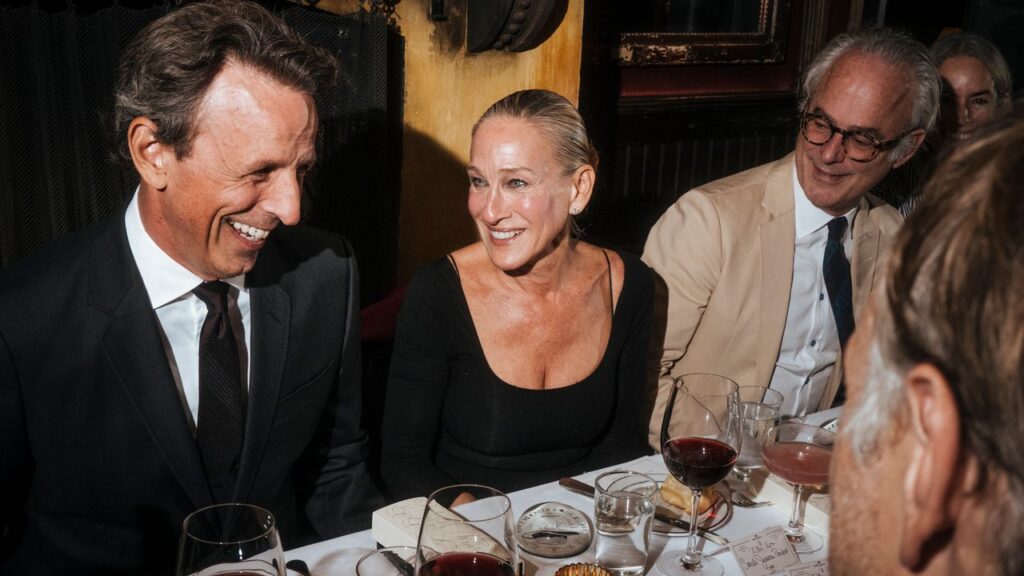The most popular man at the party was Graydon Carter. It was his party, after all: The legendary editor’s digital publication, Air Mail, hosted the dinner alongside Montblanc. (“Journalism is not dead—it’s being revived,” he diplomatically said of the Tom Wolfe Literary Prizes, which award a $10,000 honorarium to each winner.) Also, Carter owns the place.
In 2006, with partners Sean MacPherson and Eric Goode, he bought a dusty old tavern on the ground floor of a Greenwich Village townhouse and transformed it into a restaurant so hot that it became a de facto private club for the who’s who. To get a reservation, you needed to email a mysterious maître d’ named Fritz or dial a private phone line that the New York Post once called “more secretive than the CIA.” If Fritz answered (unlikely) or someone picked up (more unlikely), you’d find yourself tucked in a red booth, with anyone from Fran Lebowitz to Lindsay Lohan potentially dining nearby. In fact, so strong was the see-and-be-seen fervor of The Waverly Inn that, at one point in time, Gawker kept a running list of its mentions in Page Six, including who was spotted there eating dishes like the restaurant’s chicken pot pie.
Every recent decade has had a Manhattan restaurant that encapsulates—and often defines—the zeitgeist, where entry is granted by the conversation you bring to the table, rather than what you can pay for it. Where, on any given night, a bohemian Brooklyn artist with overdue bills could be at a table next to an Upper East Side billionaire; where a movie star could mingle with an avant-garde fashion designer or perhaps someone whose multifaceted life had no neat descriptor at all.
In the ’70s, that was Elaine’s, the Italian restaurant where Mick Jagger and Saturday Night Live cast members ordered mediocre pasta alla norma. (“And they were all impressed / with your Halston dress / and the people that you knew at Elaine’s,” crooned Billy Joel in 1978’s “Big Shot.”) In the ’80s, Andy Warhol and Jean-Michel Basquiat ate steak tartare at The Odeon, while a young Jay McInerney asked owner McNally if he could use a photo of the establishment’s neon sign for the cover of his book Bright Lights, Big City.

